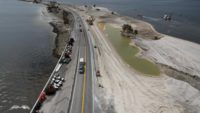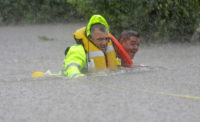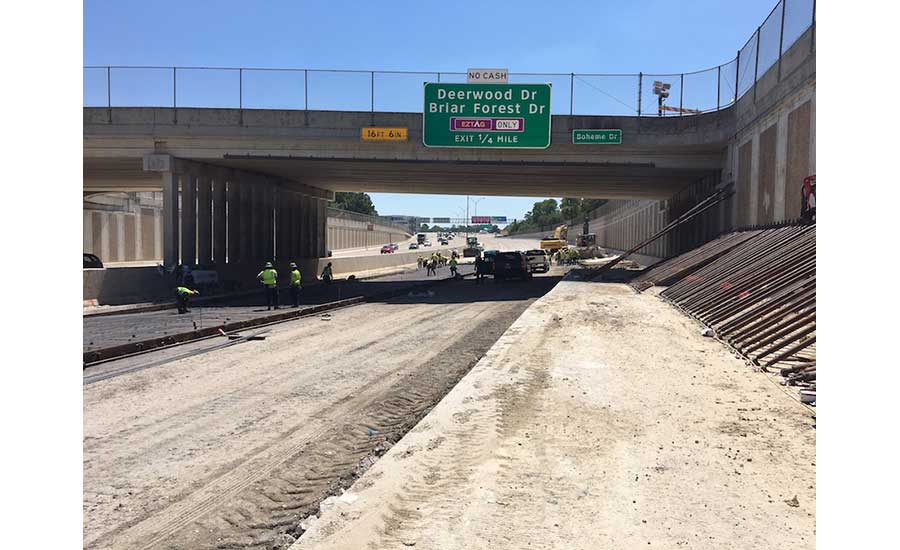HCTRA Crews Complete Five-Week Repair in Five Days

Crews work to repair the damaged section of Sam Houston Tollway two weeks after Hurricane Harvey left the roadway flooded.
Photo courtesy of Harris County Toll Road Authority

Flood waters nearly reached overpass signage on the Sam Houston Tollway in west Houston, south of Interstate-10.
Photo courtesy of Harris County Toll Road Authority


As the city of Houston continues to recover from Hurricane Harvey’s aftermath, authorities are working as fast as possible to repair damages to the city’s infrastructure. Major flooding on the west side of Houston resulted in a segment of Sam Houston Tollway just south of Interstate-10 to be submerged under about 15 ft of water.
Last week, the Harris County Toll Road Authority (HCTRA) pumped the water that remained in this depressed section of roadway using a series of pumps, revealing major damage.
"The water entered the depressed section from behind a tie-back wall passing under the roadway and up through joints in the pavement," explains John Tyler, deputy director of engineering for HCTRA. "The pressure from the water heaved five lanes of pavement and base [on the southbound lanes]."
Because the apparent damage was under the pavement, HCTRA’s engineers were concerned that there could be a failure in the storm drain system.
"We cleaned the pipes and [sent a camera down] the lines [to look] for damage. We also were concerned that the northbound lanes, although visually had no noticeable defects, might have been compromised," Tyler says. "We cored different areas of the pavement to confirm. As for the tie-back wall, 120 temporary braces were used during the replacement of the soil behind the wall with flowable fill."
The wall was structurally sound after the fill set, but the braces were supported on the failed pavement. So to prevent the pavement from moving, crews used Uretek to fill the void below the pavement, Tyler says.
ISI Contracting Inc. and Harper Brothers Construction LLC teamed with HCTRA on this project, which was executed in five days, with crews working 24/7, speedily completing work that typically would have taken four to five weeks to complete.
"Since the only damage was to the southbound lanes, these lanes were removed, pavement base and a drainage layer," Tyler says. "The subgrade was rolled for locating soft areas to replace, new base was placed and then the pavement using typical road paving construction methods."
Teams discovered upon removal of the outside lane that the shoulder lane and the underdrain for the wall were also damaged and thus replaced.
Crews repaired approximately a 350 ft by 60 ft area of pavement with cement stabilized base (two lifts), high early strength concrete and reinforcing steel.
"The road was replaced to its original state, but the repairs behind the wall should prevent water from getting beneath the roadway at this location," says Tyler. "Additional work will be performed behind the wall to try to prevent this type of failure in the future."
Total costs for the repair have not yet been calculated, but Tyler expects they were less than $2 million.
The southbound lanes were finally reopened the evening of Sept. 10, about two weeks after Harvey struck.
HCTRA plans to continue monitoring this entire section of roadway that was subjected to floodwaters, just in case any additional damages surface over the coming weeks.






